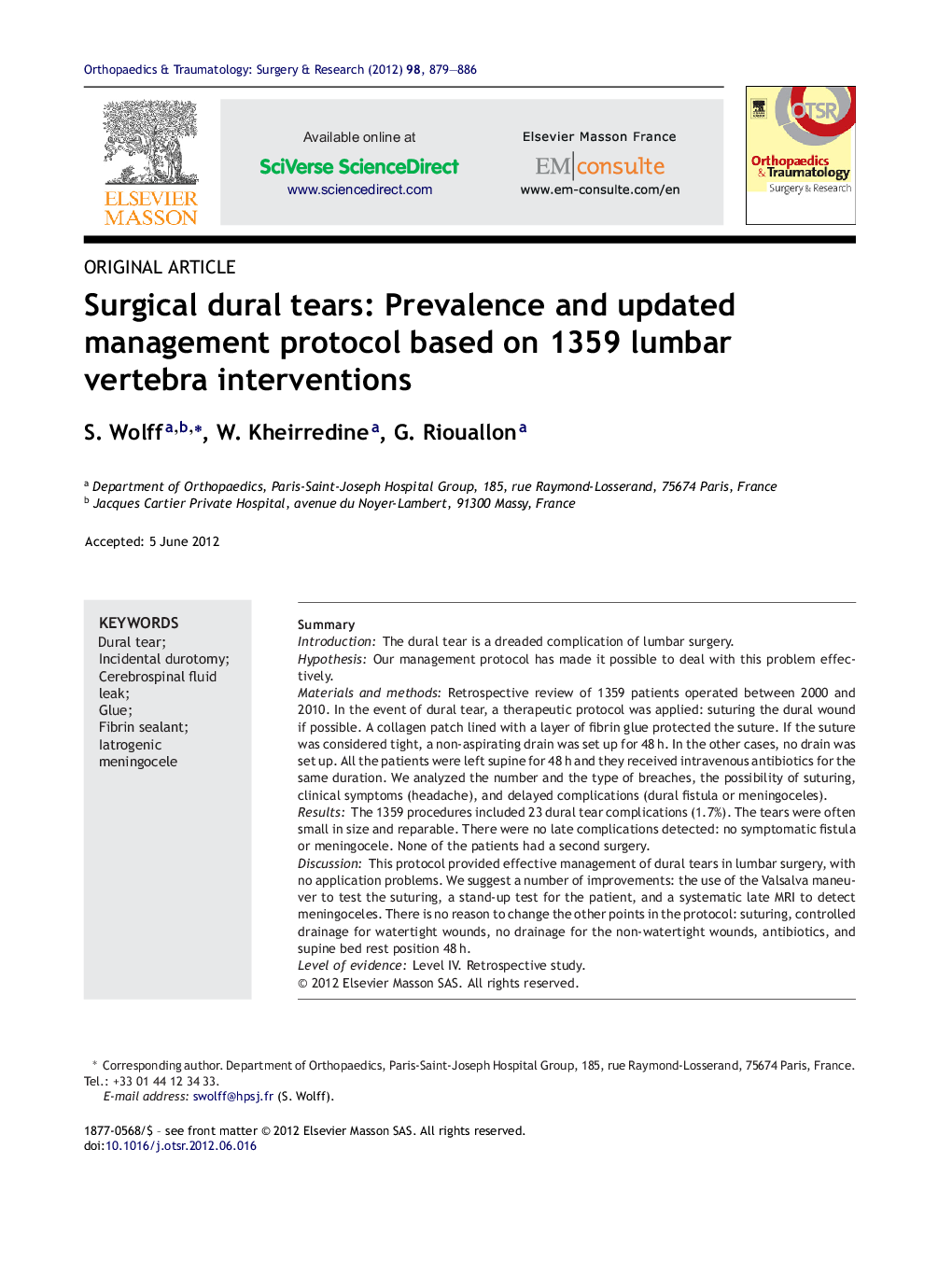| Article ID | Journal | Published Year | Pages | File Type |
|---|---|---|---|---|
| 4081951 | Orthopaedics & Traumatology: Surgery & Research | 2012 | 8 Pages |
SummaryIntroductionThe dural tear is a dreaded complication of lumbar surgery.HypothesisOur management protocol has made it possible to deal with this problem effectively.Materials and methodsRetrospective review of 1359 patients operated between 2000 and 2010. In the event of dural tear, a therapeutic protocol was applied: suturing the dural wound if possible. A collagen patch lined with a layer of fibrin glue protected the suture. If the suture was considered tight, a non-aspirating drain was set up for 48 h. In the other cases, no drain was set up. All the patients were left supine for 48 h and they received intravenous antibiotics for the same duration. We analyzed the number and the type of breaches, the possibility of suturing, clinical symptoms (headache), and delayed complications (dural fistula or meningoceles).ResultsThe 1359 procedures included 23 dural tear complications (1.7%). The tears were often small in size and reparable. There were no late complications detected: no symptomatic fistula or meningocele. None of the patients had a second surgery.DiscussionThis protocol provided effective management of dural tears in lumbar surgery, with no application problems. We suggest a number of improvements: the use of the Valsalva maneuver to test the suturing, a stand-up test for the patient, and a systematic late MRI to detect meningoceles. There is no reason to change the other points in the protocol: suturing, controlled drainage for watertight wounds, no drainage for the non-watertight wounds, antibiotics, and supine bed rest position 48 h.Level of evidenceLevel IV. Retrospective study.
